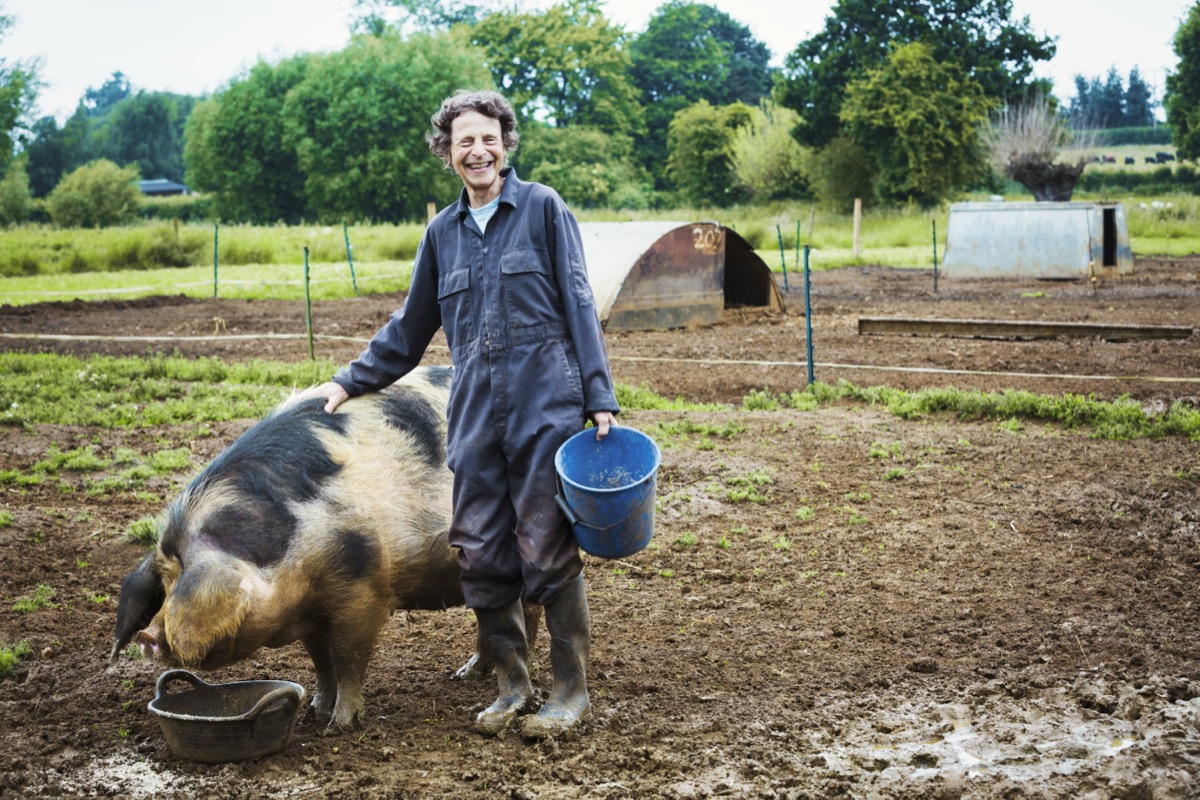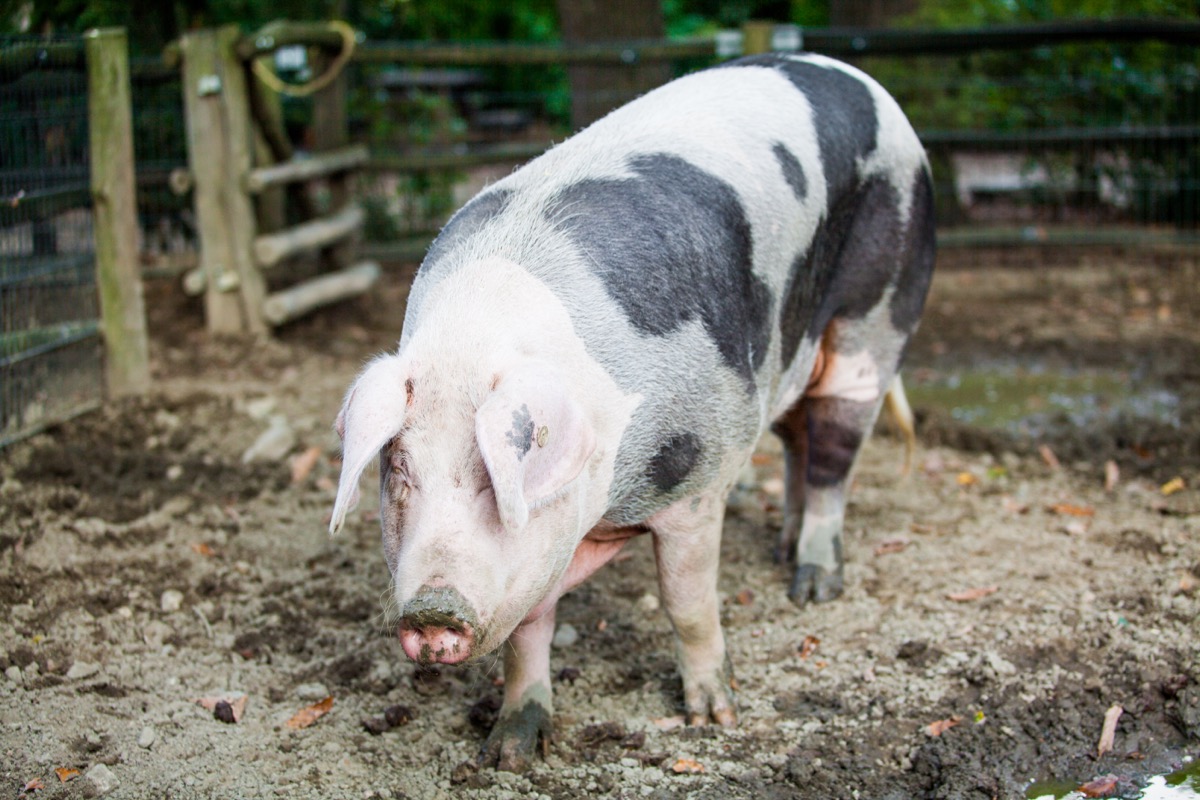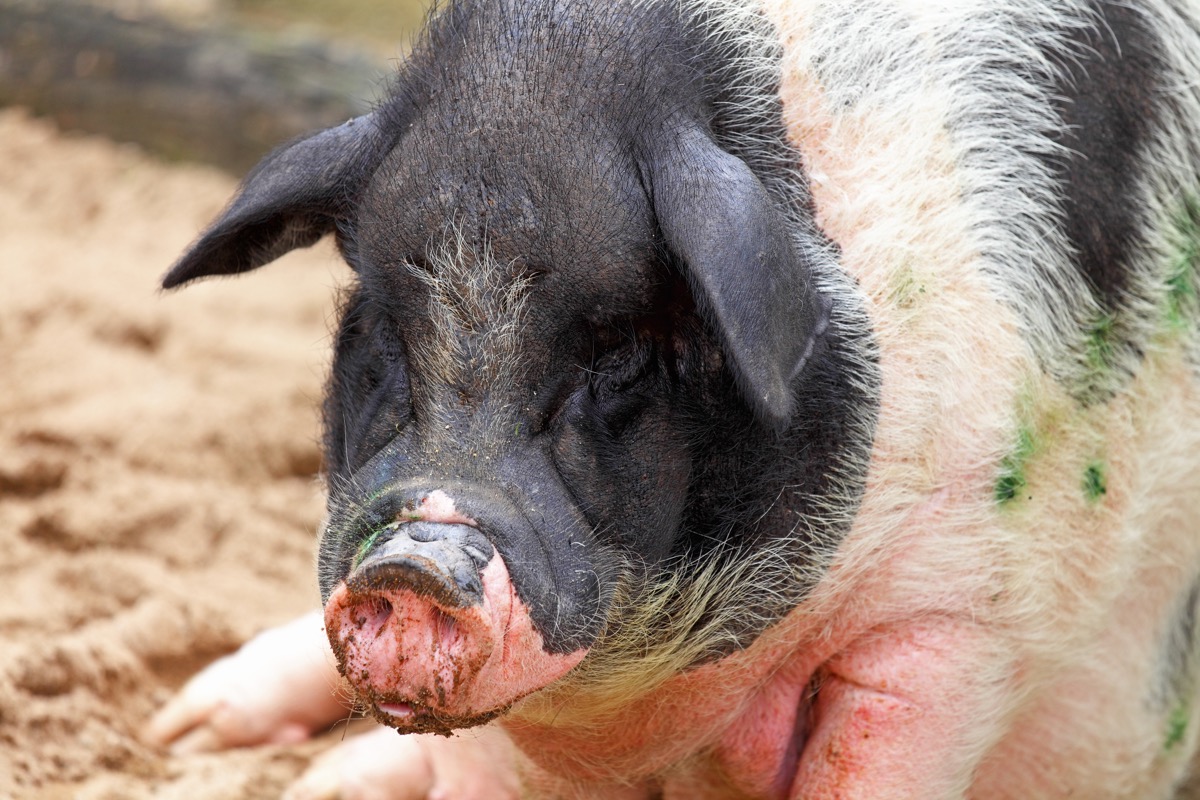Welcome to our blog, where we explore fascinating facts about Kolbroek pigs! This article delves into these remarkable animals’ origin, size, physical characteristics, pros, and cons. Kolbroek pigs have a rich history and unique attributes that make them stand out. We’ll discuss their origins, provide insights into their size and physical features, highlight the advantages of raising them, and shed light on the potential considerations.

Kolbroek Pig Facts
Kolbroek Pig Origin and History
The Kolbroek pig, originating from South Africa, has a fascinating history that dates back to the early 1800s. This breed is believed to have been developed through Dutch settlers’ crossbreeding European and indigenous African pigs. They selectively bred these pigs for their adaptability and ability to thrive in local conditions.
Over time, the Kolbroek pig became well-suited for meat and lard production, making it highly valued among farmers. The breed’s heritage and resilience have contributed to its popularity in South Africa and its recognition as a unique breed with distinct characteristics.
Size of Kolbroek Pigs: Average Weight and Height
The size of Kolbroek pigs can vary, but on average, they reach a weight of around 150 to 250 kilograms (330 to 550 pounds). These pigs usually stand about 60 to 75 centimeters (24 to 30 inches) tall at the shoulder. However, it’s important to note that there can be slight variations in size based on genetics, nutrition, and overall health. Kolbroek pigs are known for their robust and muscular build, contributing to their ability to thrive in different environments. Their size makes them suitable for both small-scale and larger farming operations.
Physical Characteristics of Kolbroek Pigs: Color, Coat, and Body Structure
- Color: Kolbroek pigs are found in different colors, including black, white, and combinations. The most common color pattern is black with white spots or patches.
- Coat: The coat of Kolbroek pigs is typically short, dense, and straight. It provides good protection against the elements and is easy to maintain.
- Body Structure: Kolbroek pigs have a medium-sized body with a sturdy and muscular build. They have a broad back, well-developed hams, and a deep barrel-shaped chest. Their legs are strong and properly aligned, allowing for efficient movement.
Pros of Raising Kolbroek Pigs for Farming
- High fertility: Kolbroek pigs have a remarkable reproductive capacity, with sows often producing large litters, resulting in increased productivity and profitability for farmers.
- Efficient feed conversion: These pigs exhibit excellent feed conversion rates, meaning they can convert feed into meat more efficiently than other breeds, reducing overall feed costs.
- Adaptability: Kolbroek pigs are known for their adaptability to various environments and climates, making them suitable for farming operations in diverse regions.
- Hardy and disease-resistant: They possess robust immune systems, enabling them to withstand common pig ailments, resulting in lower veterinary costs and decreased risks of disease outbreaks.
- Good meat quality: Kolbroek pigs produce meat of exceptional quality that is characterized by tenderness, succulence, and marbling, which consumers highly desire.
- Dual-purpose breed: They are versatile, suitable for both meat production and as a source of breeding stock, allowing farmers to capitalize on multiple revenue streams.
- Easy to handle: Kolbroek pigs have a docile and calm temperament, making them easier to handle and work with, reducing stress for both the animals and farmers.
Cons of Keeping Kolbroek Pigs as Pets
Keeping Kolbroek pigs as pets has potential drawbacks. They require ample space and specialized care and may exhibit aggression if not properly socialized. Their noise and odor can be problematic in urban settings. Allergies to pig dander and their long lifespan require careful consideration. Legal restrictions may also limit ownership.
Kolbroek Pig Breed Information: Temperament and Behavior
Kolbroek pigs are friendly and docile, making them suitable for farming and pet purposes. They are highly sociable animals that enjoy interacting with humans and other animals. These intelligent creatures quickly adapt to new situations and respond well to training. Their natural curiosity drives them to explore their surroundings and adapt to different environments. Kolbroek pigs possess excellent foraging and rooting abilities, using their snouts effectively to find food.
In case you missed it: Top 10 Common Mistakes to Avoid in Pig Farming

Kolbroek Pig Diet and Nutrition Requirements
Their diet and nutrition must be carefully considered to ensure the health and well-being of Kolbroek pigs. A balanced diet is essential, achieved through high-quality commercial pig feed or a mixture of grains, protein sources, and supplements. Monitoring their energy intake is crucial to support growth, reproduction, and maintenance.
Protein plays a major role in muscle development, and a diet consisting of around 14-16% digestible protein is recommended. Including fiber-rich foods like vegetables or roughage helps maintain proper digestion. Providing a balanced mix of minerals and vitamins is necessary. Access to water is much essential for hydration and bodily functions.
Health Issues in Kolbroek Pigs: Common Ailments and Preventive Measures
Respiratory infections, such as pneumonia, can occur due to environmental factors. Gastrointestinal disorders, like diarrhea, may arise from dietary changes or infections. Preventive measures include maintaining proper hygiene, a balanced diet, and regular veterinary check-ups.
Kolbroek Pig Reproduction and Breeding Facts
Kolbroek pig reproduction and breeding are vital to understanding when considering these animals. The gestation period for Kolbroek sows lasts around 114 days, with an average litter size ranging from 6 to 10 piglets.
Sexual maturity is typically reached between 6 to 8 months of age. Breeding often involves natural mating, although artificial insemination can also be employed. Kolbroek pigs are known for their excellent maternal instincts and good milk production, which contribute to the overall success of their reproduction.
Kolbroek Pig Farming: Profitability and Market Demand
The unique characteristics of Kolbroek pigs, such as their excellent meat quality and adaptability, make them highly sought after. According to recent market data, the demand for Kolbroek pork products has steadily risen, with consumers appreciating the breed’s succulent flavor and tender texture. Moreover, the breed’s efficient feed conversion rate contributes to cost-effectiveness in production.
Kolbroek Pig Crossbreeding: Breeds Suitable for Crossbreeding
Kolbroek pigs, with their distinctive characteristics, are often considered for crossbreeding to enhance breeds that can be suitable for crossbreeding with Kolbroek pigs. Duroc, known for its excellent meat quality, contributes to the meat characteristics of the offspring. Tamworth, recognized for its foraging abilities and hardiness, imparts these traits to the hybrid progeny. Berkshire, renowned for its marbling and flavor, can enhance the meat quality. Large Black, prized for its grazing capabilities and docile nature, may also be considered.
Kolbroek Pig Housing and Shelter Requirements
Kolbroek pigs require suitable housing and shelter to ensure their well-being. Provide a spacious and secure area for them, with a minimum of 12 to 15 square meters per pig. Ensure proper ventilation, bedding, and insulation to maintain their comfort.
Kolbroek Pig Lifespan and Longevity
Kolbroek pigs have an average lifespan of 10 to 12 years. They are known for their robust health and longevity, often attributed to their hardiness and genetic traits.
In case you missed it: Pietrain Pig Facts: Origin, Size, Physical Characteristics, Pros, and Cons

Conclusion
Kolbroek pig is a fascinating breed with a rich history and distinct physical characteristics. While their size may vary, they offer various advantages for farming. However, prospective owners should also consider potential challenges before keeping them as pets.
- Feed Your Flock for Less: Top 10 Tips to Save on Chicken Feed
- Ultimate Guide to Ossabaw Island Hog: Breeding, Raising, Diet, and Care
- Hatching Answers: The Top 10 Reasons Your Chickens Aren’t Laying Eggs
- Eggs and Economics: Breaking Down the Cost of Raising Backyard Chickens
- Defend Your Greens: Proven Methods to Keep Iguanas Out of Your Garden
- Ultimate Guide to Cinnamon Queen Chicken: A Comprehensive Guide for Beginners
- Ultimate Guide to California Tan Chicken: Breeding, Raising, Diet, Egg-Production and Care
- Ultimate Guide to Marsh Daisy Chicken: Breeding, Raising, Diet, and Care
- 10 Types of Chicken Farming Businesses You Can Start for Profits